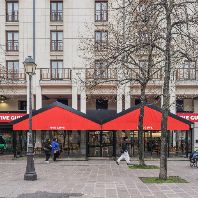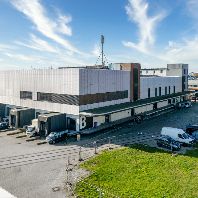According to GfK's study on retail centrality, Germany's stationary retail will generate approximately €404 bln. in turnover. This turnover varies substantially from region to region, but in a completely different way from the population's purchasing power. The study demonstrates that German consumers often do not shop where they live.
The study GfK Retail Centrality 2015 provides a breakdown of retail potential for all of Germany's regions. The study also incorporates retail purchasing power values and compares them to the regional retail turnover. This yields the retail centrality, which measures the retail drawing power of a given region. Values in excess of 100 indicate an inflow of purchasing power, while values under 100 indicate an outflow of purchasing power. In 2015, 166 German districts have an inflow of purchasing power, while 236 districts have an outflow.
Which regions are profiting from an inflow of purchasing power? As would be expected, urban districts top the list, because retail is concentrated in these locations and exerts a high draw on the surrounding areas. As in previous years, the forerunner is the urban district of Straubing, with a centrality rating of 209.
Würzburg is a good example of a city that serves as a retail magnet for the surrounding region. With a centrality rating of just 56, the rural district of Würzburg is in last place among all of Germany's districts; inhabitants of the rural district of Würzburg usually travel to the nearby city to do their shopping. Thanks to this influx of shoppers from surrounding areas, the urban district of Würzburg has a centrality rating of 195.8, which puts it in sixth place nationwide.
Top 10 districts – GfK Retail Centrality
rank
|
urban district (UD) / rural district (RD)
|
inhabitants
|
retail purchasing power index, 2015*
|
retail centrality**
|
1
|
Straubing UD
|
45,502
|
100.6
|
209.0
|
2
|
Passau UD
|
49,454
|
100.9
|
207.3
|
3
|
Trier UD
|
107,233
|
89.3
|
204.9
|
4
|
Weiden i.d.OPf. UD
|
41,726
|
100.5
|
200.6
|
5
|
Schweinfurt UD
|
51,851
|
98.9
|
197.1
|
6
|
Würzburg UD
|
124,698
|
102.2
|
195.8
|
7
|
Rosenheim UD
|
60,464
|
107.1
|
177.7
|
8
|
Hof UD
|
44,522
|
95.5
|
172.7
|
9
|
Zweibrücken UD
|
34,084
|
97.5
|
172.6
|
10
|
Kempten (Allgäu) UD
|
65,044
|
108.1
|
172.3
|
source: GfK Retail Centrality Germany 2015
*(100 = national average) ** (100 = inflow and outflow of purchasing power are balanced)
Germany’s large metropolises such as Berlin, Munich and Düsseldorf are not the highest ranking with regard to retail centrality. Mid-sized cities such as Straubing, Weiden and Passau serve as retail hotspots for the surrounding rural areas.
Large retail objects such as decentralized shopping centers and factory outlet centers can exert similar drawing power. For example, the high centrality rating (rank 9) of the district of Zweibrücken is a result of its factory outlet center.
Source: GfK














